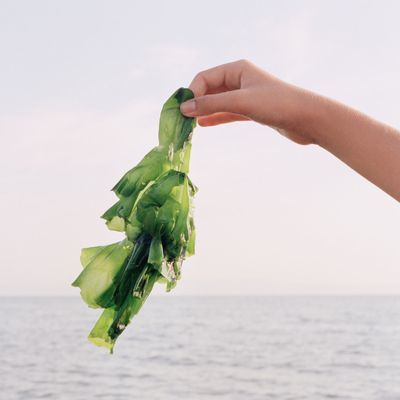
As a heath-food trend, it’s easy to be confused by blue-green algae (BGA). Not only does it sound gross, but googling it produces news reports of local officials at war with the toxic pond scum it can create.
Yet, many swear by BGA’s energy-boosting properties. In health-food circles, BGA usually refers to spirolina, chlorella, or — the hippest algae — Aphanizomenon flos-aquae (AFA). Still some BGAs can be toxic, so nutritionists recommend proceeding with caution.
Spirulina has been on the market for over a decade, but AFA has only become popular recently. One of the best-known forms of AFA is E3Live, an organic BGA harvested from the Upper Klamath Lake in south central Oregon. E3Live shots are now available to the mainstream wellness community at places like Juice Press and Juice Generation.
In its natural form, AFA looks like fine, grasslike, green hairs composed of single cells. It reportedly contains over 65 vitamins, minerals, amino acids, complex carbohydrates, phytochemicals, and trace amounts of essential fatty acids.
The strain that appears in E3Live was discovered in the 1970s by Victor Colman, who as legend has it, was looking for a way to feed NASA scientists. In the 1990s, it became a popular racehorse supplement after Tamera Campbell, now CEO of the E3Live company, began selling it to trainers for their Kentucky Derby–bound thoroughbreds. Due to popular equine demand, Campbell eventually began marketing the supplement to humans.
“We had tons of horse owners that were eating the algae, and people kept saying what would it take to sell this for humans?” Campbell told the Cut.
Now E3Live is sold in powder, capsule, or frozen form at health-food stores and on Amazon. According to Campbell, the company uses a mechanical filtration system and meets all standards set by the Oregon Department of Agriculture. (A handful of other companies now also sell AFA from Upper Klamath Lake.)
“I would say that the majority of all people notice that they have more sustained energy, they feel better overall, they feel more mentally alert, they notice that their digestion and elimination improve,” Campbell said. “They notice an improvement in their hair, skin, and fingernails. And if you work out in a gym they notice their energy is sustained longer.”
Skinny Confidential blogger Lauryn Evarts, who has been taking a shot every other day for six months, said she recovered faster after surgery and her immune system is stronger.
“I treat it like a shot of tequila. Chaser and all,” Evarts told the Cut. “This means a shot of orange juice next to the shot of E3Live. My immune system has become stronger. I haven’t gotten sick in months.”
Blue Majik is another popular BGA supplement also sold by the E3Live company. A spirulina extract, Blue Majik is available as a powder and in juices. Last week, I drank a combination of E3Live and Blue Majik to see if I, too, could become as healthy as a racehorse. I bought a small jar of the powdered form of E3Live for about $30 at New York’s Westerly Natural Market. Westerly carries frozen, powdered, and capsuled E3Live — the most popular is the frozen — but because I was traveling I went with the powder.
The next day, after a seven-mile hike in the mountains, I poured a capful of the E3Live powder into a cup of water. I opened a bottle of orange juice as a chaser. The drink, a soupy forest-green color, looked disgusting, but wasn’t bad. It tasted like toasted caraway seeds, and I found I didn’t need the chaser.
I didn’t feel any immediate effects, but I was able to stay out at the campfire longer than my friends, which never happens, and I wasn’t sore the next day. Regarding my digestive system, for better or worse, it was very active in what E3Live CEO Tamera Campbell called “elimination.”
A few days later, I tried Blue Majik in Juice Generation’s Holy Water — a tasty and refreshing combination of tulsi (a.k.a. holy basil), coconut water, and pineapple. I felt refreshed, had maybe a tad more energy, and I wasn’t hungry until about lunch time.
Still, nutritionist Stephanie Clarke remains skeptical of the BGA claims.
“Blue Majik has some antioxidants in it, and anytime something has antioxidants it is beneficial,” Clarke told the Cut. “But there is not a lot of research to say it is more beneficial than another foods with antioxidants.”
For now, she recommends sticking with regular health food.
“You don’t want to replace your spinach and blueberries in your smoothie with AFA,” Clarke said. “It becomes a question of whether or not it is worth it to add in addition to these things.”





